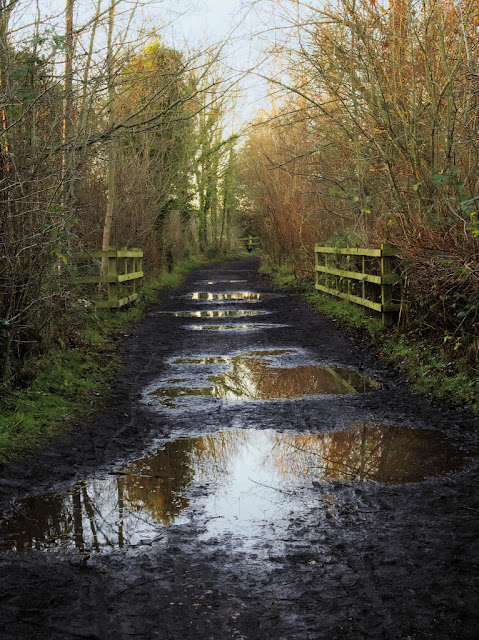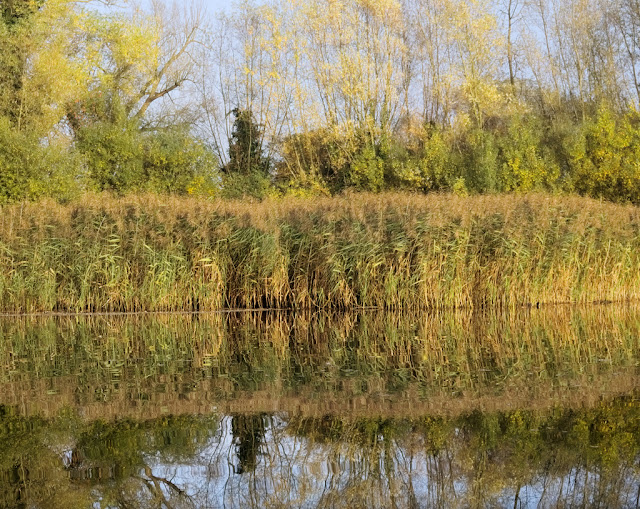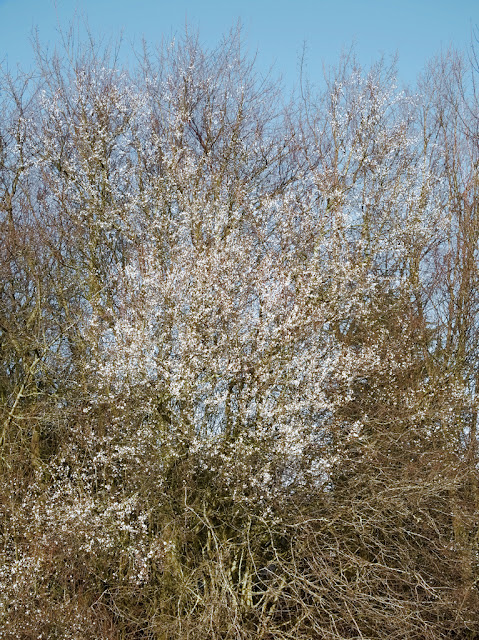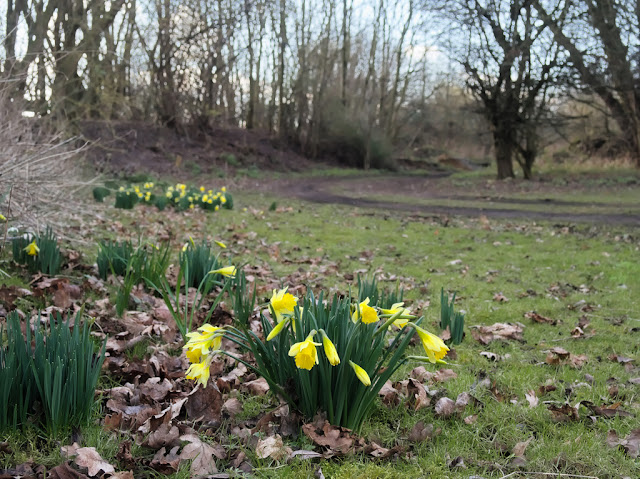 |
| By Dickerson's Pit - 13 April 2016 |
These tall tree stumps, complete with woodpecker holes, are part of a trio of such stumps by the path on the eastern side of Dickerson's pit. Later in the summer they will be covered in cascades of convolvulus.
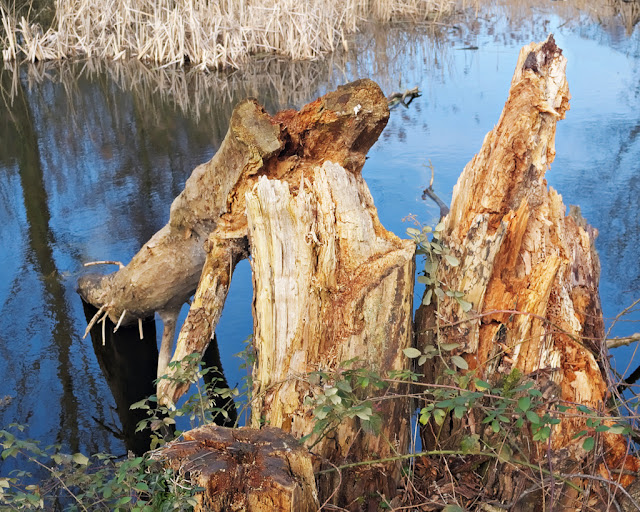 |
| Wetlands - 22 February 2016 |
More often, the dead stumps do not remain intact and upright, but, like the tree in this image, are broken off by one of the gales which batter the park from time to time.
 |
| By Hall's Pond - 13 March 2016 |
While willow trees like this, snapped in two, are a dramatic testimony to the power of the wind.
 |
| Centre of Park - 14 March 2016 |
At other times, the trees are simply uprooted. With time, the soil is washed away, leaving a skeleton of roots to bleach in the sun.
 |
| Woods at Southern Edge of Park - 3 April 2016 |
This small tree reminds me very strongly of an animal skeleton.
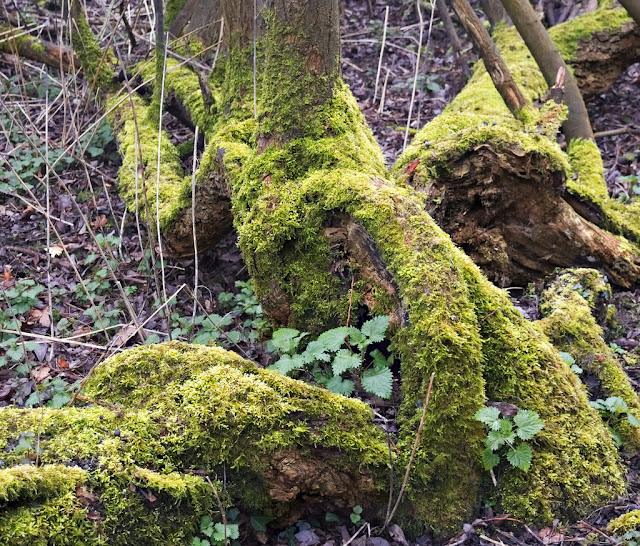 |
| By Todd's Pit - 13 March 2016 |
Eventually, all the fallen branches will be covered by moss and overgrown by nettles and brambles. Herb robert is another frequent coloniser of the dead wood in the park. The logs themselves will provide food and shelter for a host of invertebrates including beetle larvae.
Next: Spring Leaves

